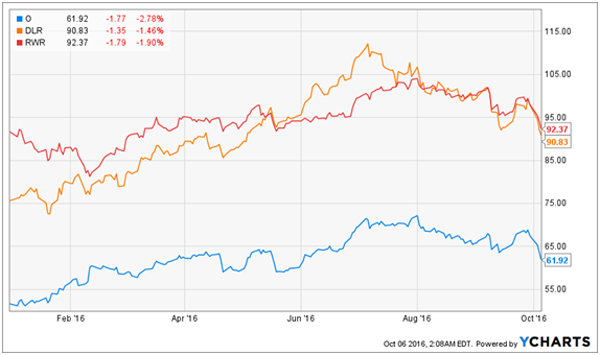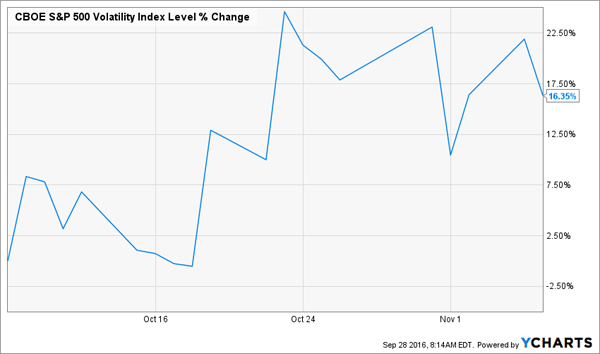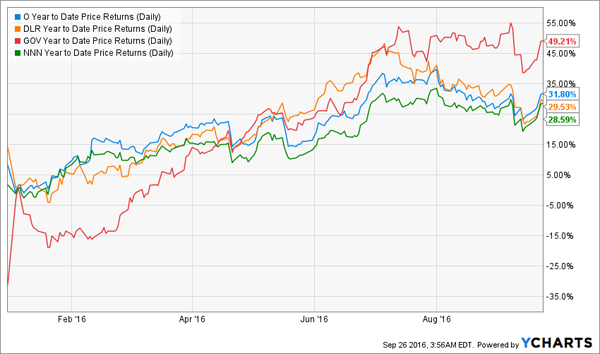Chief Investment Strategist
A Safe 4-Fund Retirement Portfolio That Yields 5%
Brett Owens, Chief Investment StrategistUpdated: October 14, 2016

The key to beating the market – AND keeping your nest egg intact – is diversification. If you don’t put all your eggs in one basket, you can avoid the pitfalls of exposure to one particular company.
For example, people who bought and held Wells Fargo (WFC) after seeing Warren Buffett praise the bank as a safe, reliable pick have been horrified to see the stock plummet on the recent fake account scandals. You could have avoided this by investing in a diversified financials ETF like the Financial Select SPDR Fund (XLF). With that fund, you’d be up 1.5% year-to-date and have a 2.6% yield based on today’s current price.… Read more





